by Martin Green
The lines between form, fun, and functionality have been blurry, especially in recent years.
After the mechanical watch entered an era of renaissance following the quartz crisis, it did so under a new set of rules. While it would have been preferable for mechanical movements to display accurate time – even the most expensive mechanical watch could, and still cannot, outperform the cheapest quartz watch – so the importance of other aspects of the mechanical were elevated over absolute precision.
High-end watch brands started emphasizing how mechanical movements were made – hand vs. machine – craftsmanship, complications, use of materials, artistry, and overall design. What used to be the unremarked details of a practical everyday object with one primary function, to display the accurate time, became highly desirable traits in a wearable piece of art.
This changed the watch world, but also the timepieces that it produced.
This is still evident today, and very clearly put on display at Baselworld 2018 where several distinguished brands introduced what can best be described as the ultimate toys for watch lovers.
Sign your name across my heart: Jaquet Droz Signing Machine
Very high on the “nobody needs this, but everybody wants one” list is the Signing Machine by Jaquet Droz.
As part of the brand’s 280th anniversary celebrations, the Signing Machine pays tribute to the automatons that are at the heart of the legacy of Jaquet Droz. A beautiful case contains a pen and a mechanical machine.
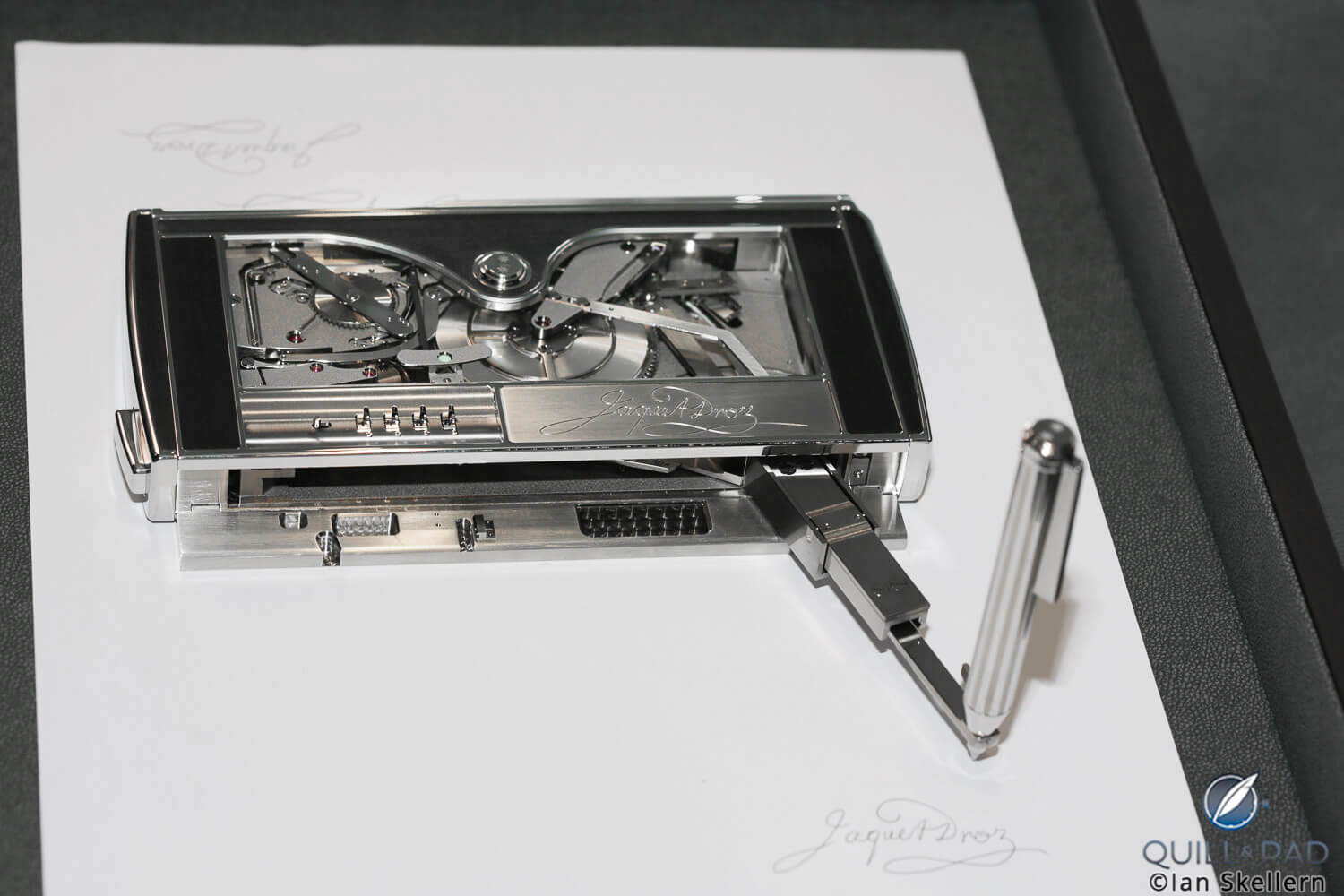
Jaquet Droz Signing Machine
To use, the pen is placed in a holder and upon pressing “play” the machine signs its owner’s autograph (or other text) on a piece of paper. The smoothness with which the Signing Machine does this is remarkably fascinating to watch. It took Jaquet Droz four years to develop this mechanical marvel, and examples are only made on request.
The reason for this is quite obvious: it is a very personal device containing the client’s own signature. A cipher lock reduces the risk of unauthorized use.
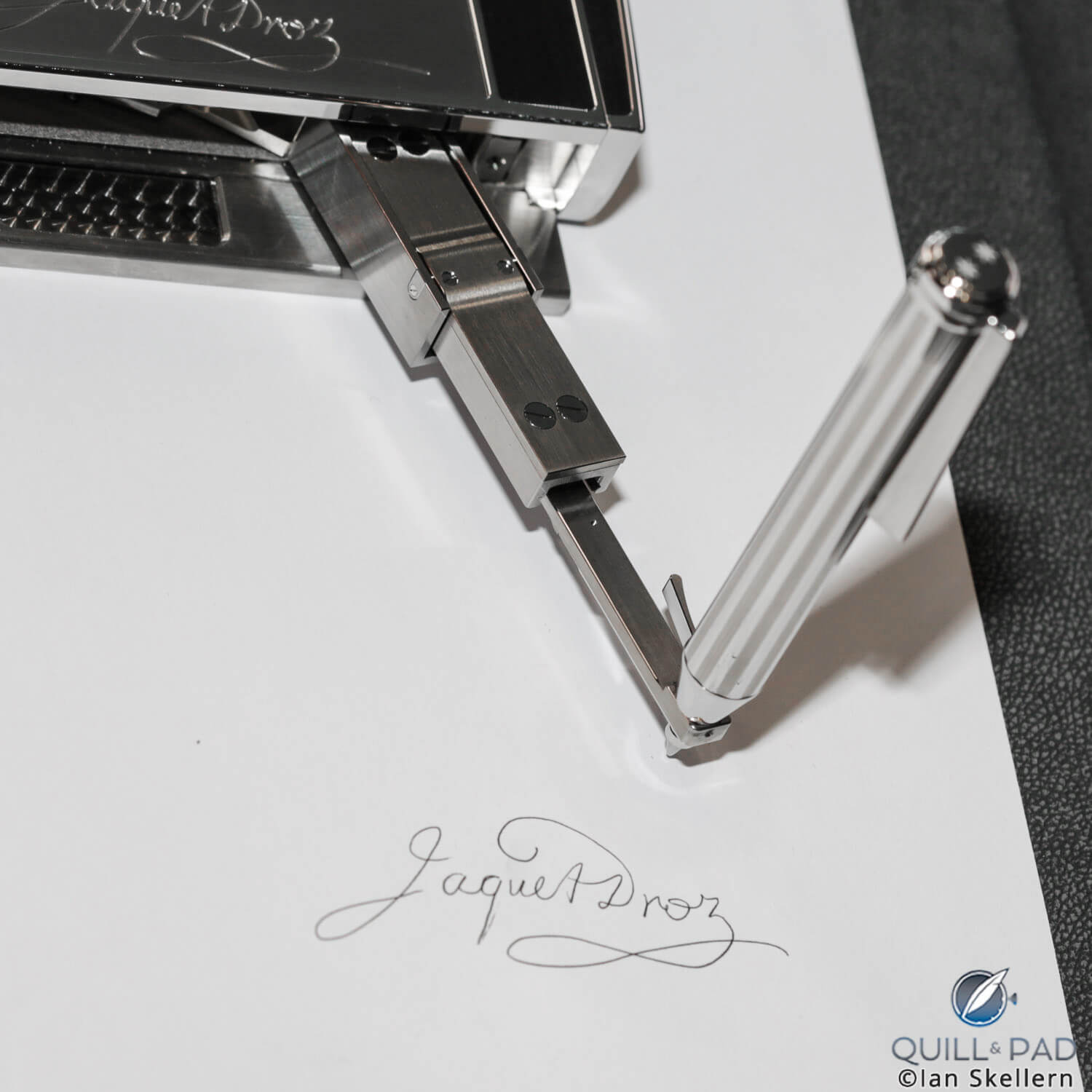
Stylus of the Jaquet Droz Signing Machine
Jaquet Droz developed the Signing Machine to write in any known language, from Mandarin to Arabic and from Russian to English. And if the owner prefers it to scribble a little landscape, that is of course possible as well.
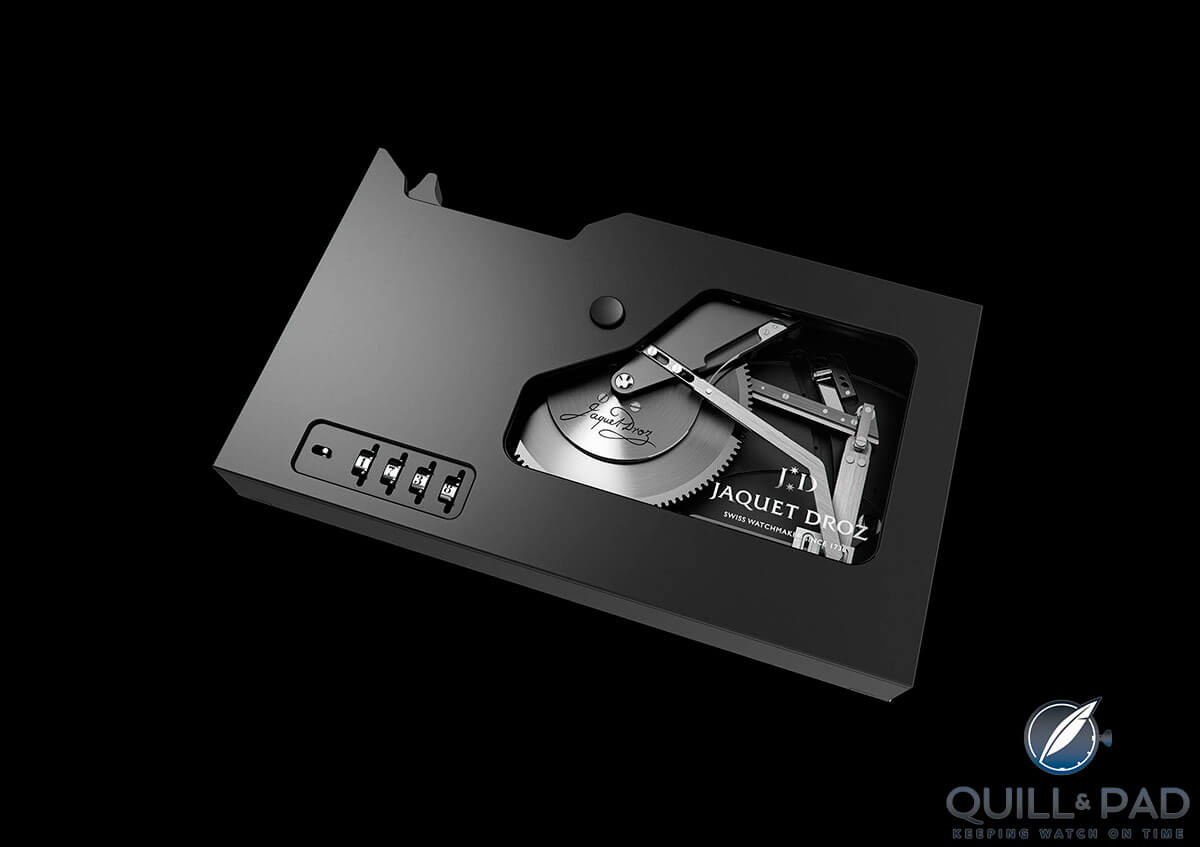
Jaquet Droz Signing Machine
For those who think that the Signing Machine by Jaquet Droz is a bit too understated to match their personal styles, rest assured that customization is on the order of the day. Harry Winston, Jaquet Droz’s Swatch Group sister brand, even released its own version set with generous amounts of blue opals and diamonds. The Harry Winston version is called Precious Signature.
Joshua Munchow provides more insight on this modern automat in Jaquet Droz Signing Machine: Keeping Handwriting Alive, With A Machine.
The future is atomic: Urwerk AMC
Sorry to disappoint if you thought Urwerk had made an homage watch to the cars of the American Motor Company: AMC instead stands for Atomic Master Clock. And with this device, Urwerk takes mechanical watchmaking to the next level with a wristwatch being automatically set with the precision of an atomic clock. By an actual atomic clock built into the case.
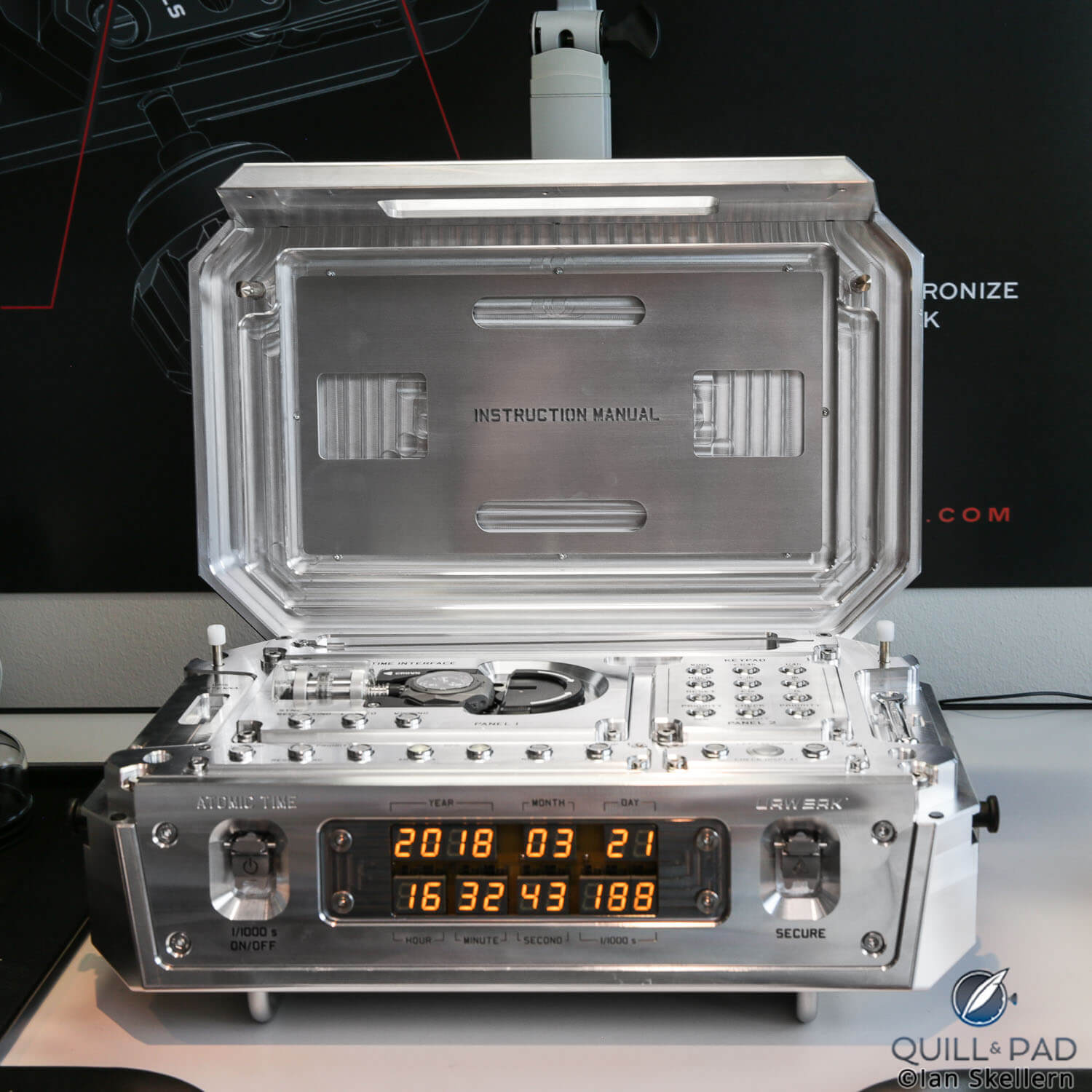
Urwerk AMC: the wristwatch sits near the center on top
To achieve this, Urwerk created an entirely new mechanical movement consisting of serially coupled, stacked double spring barrels providing the watch with a power reserve of 80 hours.
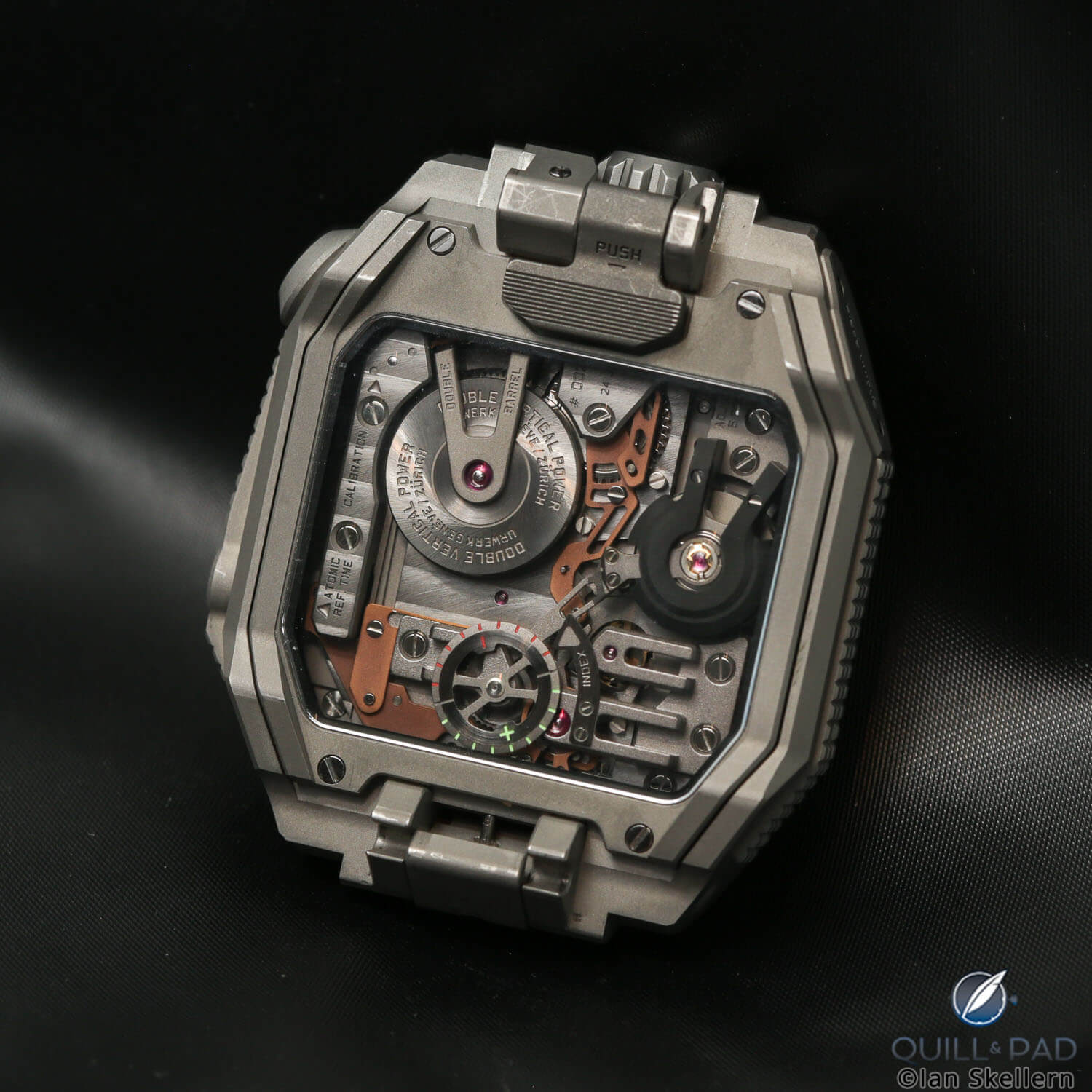
Urwerk AMC watch movement through the display back
While this is impressive in itself, what makes it really special is that the entire movement is created to be manipulated from the outside by another machine. This machine contains an atomic clock as well as a cradle for the AMC wristwatch. When inserted and started, the mechanism both winds the wristwatch and sets the correct time, as well as adjusting the rate when needed.
With AMC, Urwerk has effectively created a modern version of Abraham-Louis Breguet’s Pendule Sympathique.
Of course, the AMC represents a tremendous amount of effort and technical dexterity, not to mention a hefty price tag, to solve a problem that also has a cheap and equally effective answer in the shape of thermo-compensated quartz or radio-controlled watches.
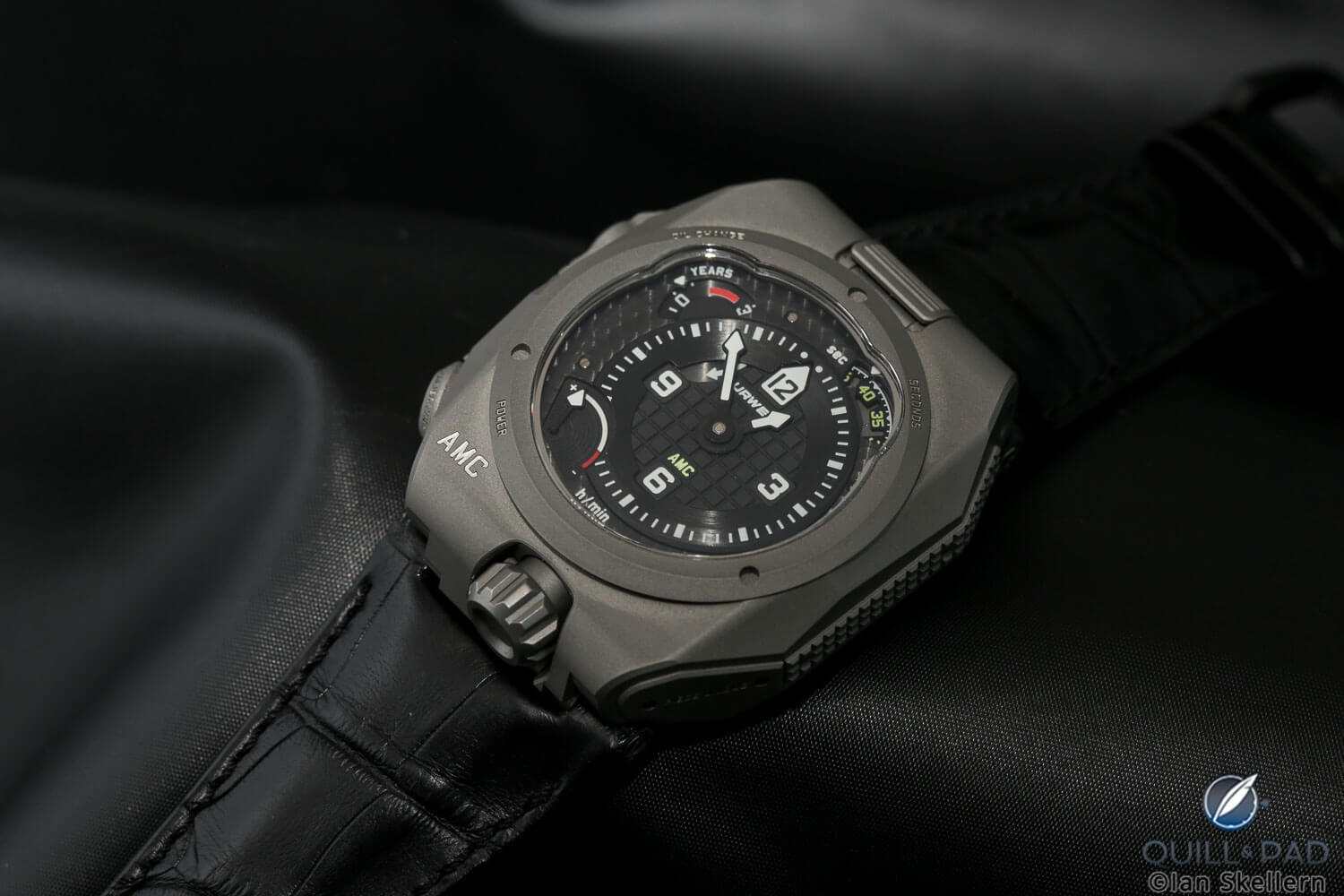
Urwerk AMC watch
The beauty of the Urwerk AMC is found in the combination of technological elements allowing a mechanical watch to function at an unprecedented level, which has only become possible thanks to the passion of Urwerk founders Felix Baumgartner and Martin Frei.
For a more in-depth look at this remarkable watch, check out Ian Skellern’s article Urwerk AMC: Atomic (Clock) Mechanical Control Is A 21st Century Version Of Abraham-Louis Breguet’s Sympathique Clocks But Much, Much Better (Geiger Counter Not Included).
For more information, please visit www.urwerk.com/en/collection-chronometry-collection-emc-amc-c17.
MB&F and the importance of having cool friends
Maximilian Büsser has already put the importance of having cool friends in the watch world on display. Over the years, these friendships have helped result in the most amazing watches – and, thanks to L’Epée, also clocks.
This year the two brands partnered up again, introducing The Fifth Element, which to my thinking makes a clear case for both time and weather being controlled by aliens. And The Fifth Element does so in the quirky yet functional style we have grown so accustomed to in MB&F’s product lines.
A “mothership” offers room for three weather-related devices in addition to a time pod: a thermometer, a hygrometer, and a barometer. These elements shaped like pods feature highly domed crystals. They can also be taken from the mothership and positioned individually.
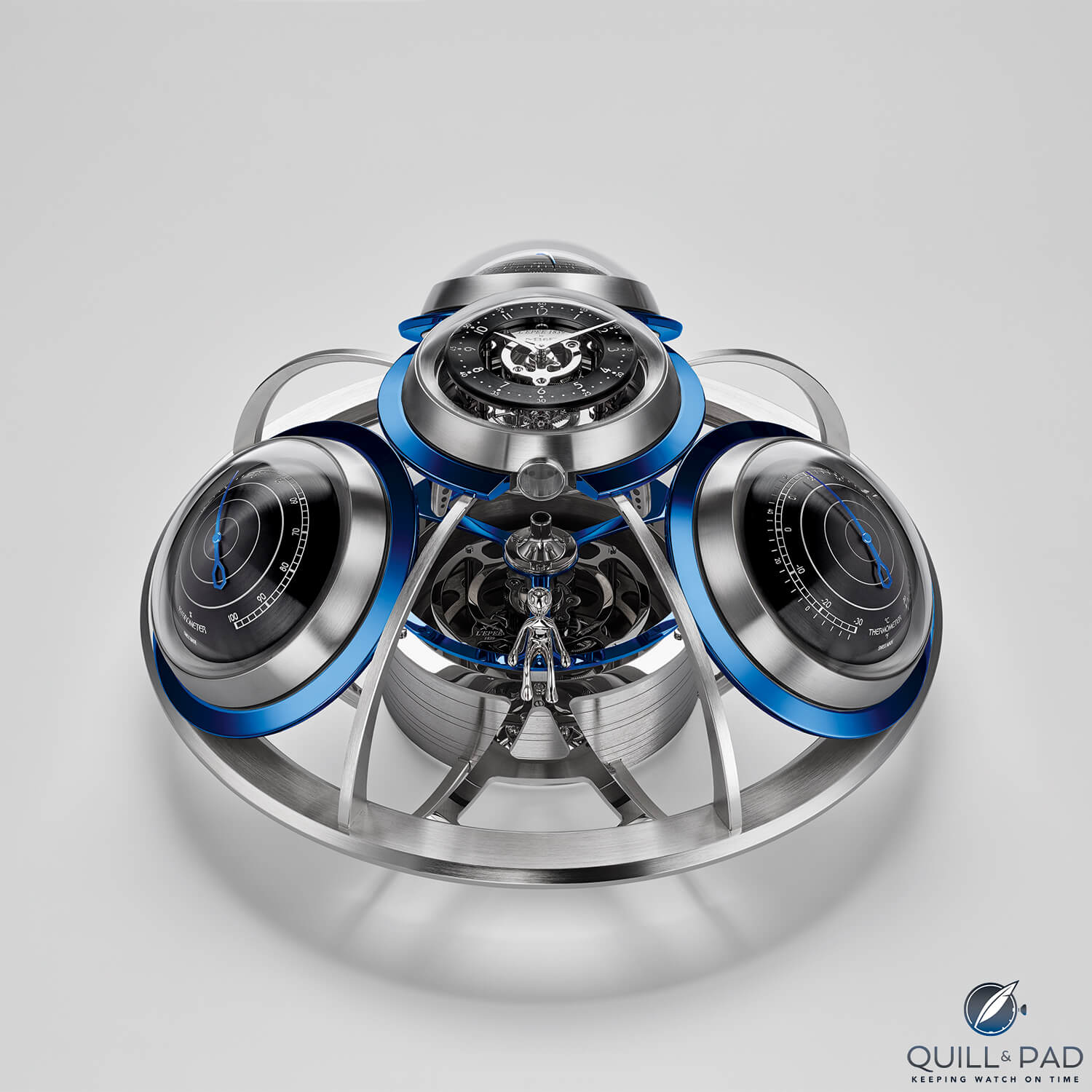
The Fifth Element by MB&F and L’Epée
This is one of the reasons why I believe that MB&F has always been such a success: in all its quirkiness, the products are not only well made and exceptionally finished but also remain highly practical.
And, yes, there is also a clock, beating away in the middle of the mothership. Here you can both easily read the time and admire the beautifully decorated eight-day mechanical movement crafted by L’Epée.
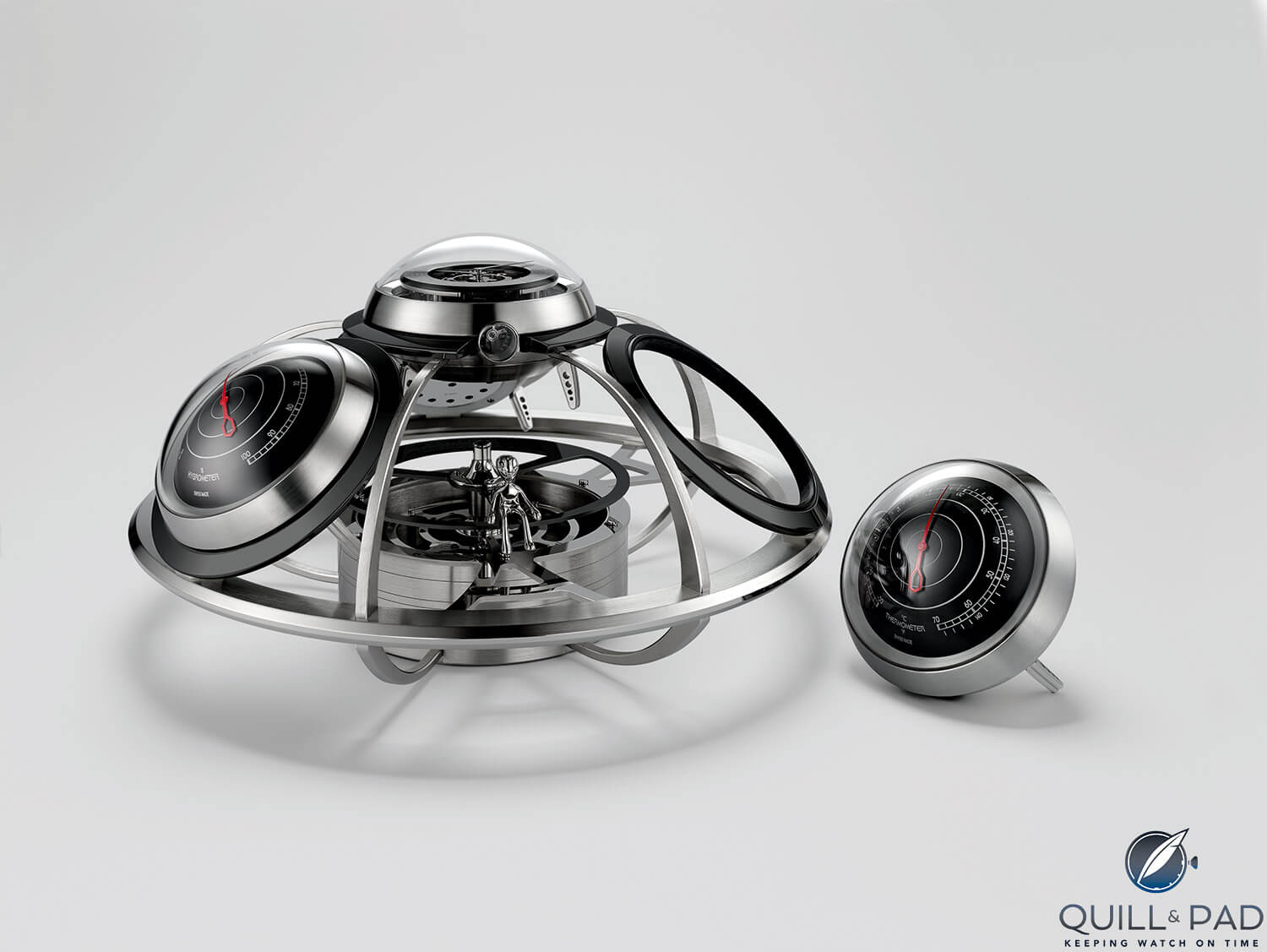
The Fifth Element by MB&F and L’Epée
The mothership itself also features a mechanical movement, but this one only powers the ring on which Ross, MB&F’s honorary alien, sits dreaming of distant planets or better weather.
For more information please visit www.mbandf.com/en/machines/co-creations/the-fifth-element.
Quick Facts Jaquet Droz Signing Machine
Case: 158 x 82 mm, stainless steel and pear wood veneer, hand-engraved 18-karat gold
Movement: manual winding Jaquet Droz MAS
Functions: mechanical signature, power reserve, four-digit locking code
Limitation: custom made to order
Price: 350,000 to 480,000 Swiss francs
Quick Facts Urwerk AMC
Case: 45 x 30 x 18 cm, aluminum
Movement: manual-wind AMC caliber with stacked serially coupled double mainspring barrels coupled
Functions: hours, minutes, seconds; oil change indicator; Master atomic clock that can wind, set and adjust the rate of the wristwatch
Price: approx. 3 million Swiss francs
Quick Facts MB&F x L’Epée The Fifth Element
Case: steel, brass, and bronze ”mothership” with four “pods” available in silver, blue, or black
Movement: L’Epée manual-wind 8-day movement
Functions: clock (hours and minutes), barometer (air pressure), thermometer (air temperature), hygrometer (air humidity)
Limitation: 18 pieces in each color
Price: CHF 52,000
Leave a Reply
Want to join the discussion?Feel free to contribute!





















































Cheapest quartz outperforming Swiss mechanical movements is a myth and utter nonsense. Quartz, especially cheap, is not that accurate and mechanical watches are not that bad! And In my personal experience this battle is even further from being lost. Somehow most accurate of my watches tick within second or less a day! While wuartz…. if we’re not talking good quartz watches but any quartz or really cheap one – these can loos minutes in a month, which is way more than second or two a day. This artistic exaggeration underlines the beauty of mechanica movement in misleading and wrong way. It also devaluates Swiss work, which is not only about finishing and decoration.
PS: one of the simplest and cheapest mechanicals i’ve Got has (almost ugly) Seagull movement. Yes, I know am just lucky and it is not a sign of ‘serial quality’, but even this ‘engine’ beats within 3 seconds a day somehow! Which again is beyond cheapest quartz for sure.
Well, every quartz watch I have owned (quite a few over the years – including a couple at about £10) has been better than +/- 1 second a day. Oddly enough [though I guess that was just lucky regulation for my activities], the only mechanical watch I have that equals that is also my cheapest – an Omega SM300ceramic.
I applaud you on your fine collection of marine chronometers, Eugene. Unfortunately, most collectors, myself included, have to be a little bit more forgiving regarding the precision of our mechanical watches.